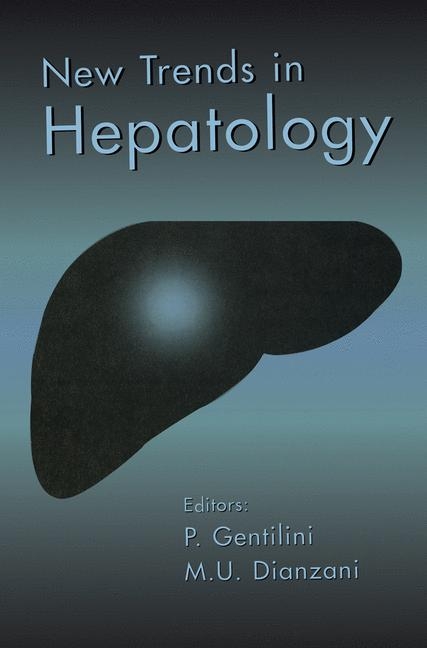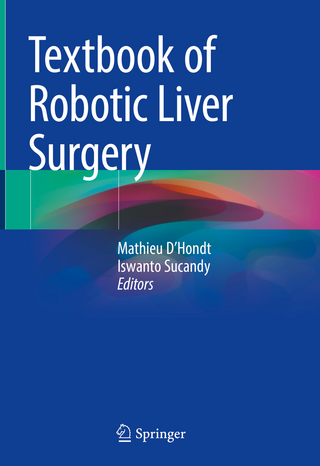
New Trends in Hepatology
Springer (Verlag)
978-0-7923-8703-9 (ISBN)
- Titel ist leider vergriffen;
keine Neuauflage - Artikel merken
Foreword. Section 1: Pathogenetic Mechanisms of Liver Injury. 1. 4-Hydroxy Alkenals, Products of Lipid Peroxidation, as Signals for Biochemical Functions of Normal Cells; M.U. Dianzani. 2. Oxidative Stress and Protein Kinase C Activity Modulation; C. Domenicotti, et al. 3. Oxidative Damage in Chronic Liver Disease; E. Baldi, et al. 4. Chronic Ethanol Consumption Impairs Dolichol Levels and Glycosylation Processes in Rat Liver Microsomes and Golgi Apparatus; D. Cottalasso, et al. 5. Compartmentation and Redox State of Thiols and Proteins During Acute Ethanol Intoxication in Rats; E. Altomare, et al. 6. Possible Role of Ethanol-Derived Free Radicals in the Pathogenesis of Alcohol-Induced Liver Damage; E. Albano, et al. 7. Hepatic Iron Overload Induced by Phenylhydrazine: Release of Iron in a Free Form and DNA Damage; M. Comporti, et al. 8. The Effects of Development of the MDR 1 Phenotype on Cell Susceptibility to Undergoing Lipid Peroxidation and Ionizing Radiation; R. Mazzanti, et al. 9. Molecular and Cellular Aspects of Iron-Mediated Liver Toxicity; A. Pietrangelo, et al. 10. The Cellular and Molecular Basis of Liver Fibrogenesis; M. Pinzani, et al. 11. Proliferation of Hepatic Stellate Cells and Lipid Peroxidation: Changes Due to Polyphenols; G. Svegliati Baroni, et al. 12. Reoxygenation Injury in Isolated Rat Hepatocytes; P. Caraceni, et al. 13. Oxidative Stress and Cell Damage Following Orthotopic Liver Transplantation; E. Chiarpotto, et al. 14. The Genomic Response of Liver Cells to Post-Ischemic Reperfusion and Oxidative Stress; A. Bernelli-Zazzera. Section 2: Pathophysiology of Bile Secretion. 15. Cytotoxic and Protective Effects of Bile Salts in Vitro; F. Carubbi, et al. 16. Lamellar Bodies in Human Gallbladder Bile; S. Ginanni Corradini, et al. 17. Hepatocyte Lipid-Metabolic Interplays and the Cholesterol Secretion Process to Bile: Insights from Rat Studies; M. Carrella. Section 3: Insights in Hepatic Carcinogenesis. 18. Lipid Peroxidation and Hepatocarcinogenesis: &ggr;-Glutamyl Transpeptidase-Dependent Oxidant Stress in Hepatic Preneoplastic Lesions and HEPG2 Hepatoma Cells; A. Pompella, et al. 19. Antioxidant System in Hepatocellular Carcinoma; A. Grattagliano, et al. 20. Loss of Heterozygosity of the Long Arm of Chromosome 16 in Hepatocellular Carcinoma on Liver Cirrhosis; L. Gramantierei, et al. 21. Potential Molecular Mechanisms of Viral Liver Carcinogenesis; M.S. De Mitri, et al. 22. Prevalence of Wild-Type and Variant Transcripts of Liver Estrogen Receptors in Chronic Liver Disease; E. Villa, et al. Section 4: Pathogenetic Aspects of Hepatitis C Virus (HCV) Infection. 23. Molecular Biology of HCV: Implications in Epidemiology and Diagnosis of Infection; M. Rapicetta, et al. 24. Cell-Mediated Immune Response in Hepatitis C Virus (HCV) Infection: Are Different Strategies Adopted by HCV and Hepatitis B Virus to Persist?; F. Fiaccadori, et al. 25. The Epidemiological and Clinical Aspects of Hepatitis C in Italy; F. Morisco, et al. 26. Diagnostic Evaluation of Patients with Chronic HCV Infection; S. Nardiello, et al. 27. Correlation Between Hepatitis C Virus RNA Levels i
| Zusatzinfo | 352 p. |
|---|---|
| Verlagsort | Dordrecht |
| Sprache | englisch |
| Gewicht | 714 g |
| Themenwelt | Medizinische Fachgebiete ► Innere Medizin ► Hepatologie |
| ISBN-10 | 0-7923-8703-1 / 0792387031 |
| ISBN-13 | 978-0-7923-8703-9 / 9780792387039 |
| Zustand | Neuware |
| Informationen gemäß Produktsicherheitsverordnung (GPSR) | |
| Haben Sie eine Frage zum Produkt? |
aus dem Bereich


